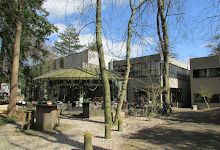Archive number: 171
Title: Palindrome
Main Album: Focus Family 11
Track number: 7
Genre: Progressive Rock Instrumental
Studio: WedgeView Studios, Netherlands
Length: 5:34
Composer: Thijs van Leer
Musicians: Thijs van Leer – Hammond organ; Menno Gootjes – Guitars; Udo Panekeet – Bass; Pierre van der Linden – Drums
Producer: Geert Scheigrond
Engineer: Geert Scheigrond
Label: In and Out of Focus Recordings
Date of recording/release: November 2018
Alternative recording: None
Notes: The track begins with drums then a guitar riff plus a discordant organ sound that cuts through the melody. This pattern continues for the first 49 seconds when a lighter pattern comes in for 15 seconds before reverting to the previous pattern. At 1:26 we are back to the new lighter pattern for another 15 seconds before reversion to the first pattern. At 2:02 a new stately slow march comes in. This lasts down to 2:36 when the original pattern repeats punctuated with a series of short drum breaks (at 2:58-3:05, 3:16-3:23, a longer one at 3:34-3:5, 3:56-4:03 and the longest at 4:14-4:45). The stately slow march comes in again at 4:46 to end the track.
A palindrome is a word, number, phrase or other sequence of symbols that reads the same backwards as forwards, eg madam or racecar, the date and time 12/21/33 12:21 and the sentence: "A man, a plan, a canal – Panama". The 19-letter Finnish word saippuakivikauppias (a soapstone vendor), is the longest single-word palindrome in everyday use, while the 12-letter term tattarrattat (James Joyce Ulysses) is the longest in English.
The word was introduced by English poet and writer Henry Peacham in 1638. It is derived from the Greek roots πάλιν 'again' and δρóμος 'way, direction'; a different word is used in Greek, καρκινικός 'carcinic' (lit. crab-like) to refer to letter-by-letter reversible writing. The concept of a palindrome can be dated to the 3rd-century BC, although no examples survive; the first physical examples can be dated to the 1st-century AD with the Latin acrostic word square, the Sator Square (contains both word and sentence palindromes) and the 4th-century Greek Byzantine sentence palindrome nipson anomemata me monan opsin.
Palindromes are also found in music and biological structures (most genomes include palindromic gene sequences). In music Haydn's Symphony No. 47 in G is nicknamed "the Palindrome". In the third movement, a minuet and trio, the second half of the minuet is the same as the first but backwards, the second half of the ensuing trio similarly reflects the first half, and then the minuet is repeated.
The interlude from Alban Berg's opera Lulu is a palindrome, as are sections and pieces, in arch form, by many other composers, including James Tenney, and most famously Béla Bartók. George Crumb also used musical palindrome to text paint the Federico García Lorca poem "¿Por qué nací?", the first movement of three in his fourth book of Madrigals. Stravinsky's final composition, The Owl and the Pussy Cat, is a palindrome.
The first movement from Constant Lambert's ballet Horoscope (1938) is entitled "Palindromic Prelude". Lambert claimed that the theme was dictated to him by the ghost of Bernard van Dieren, who had died in 1936. British composer Robert Simpson also composed music in the palindrome or based on palindromic themes; the slow movement of his Symphony No. 2 is a palindrome, as is the slow movement of his String Quartet No. 1. His hour-long String Quartet No. 9 consists of 32 variations and a fugue on a palindromic theme of Haydn (from the minuet of his Symphony No. 47). All of Simpson's 32 variations are themselves palindromic.
Hin und Zurück ("There and Back": 1927) is an operatic 'sketch' (Op. 45a) in one scene by Paul Hindemith, with a German libretto by Marcellus Schiffer. It is essentially a dramatic palindrome. Through the first half, a tragedy unfolds between two lovers, involving jealousy, murder and suicide. Then, in the reversing second half, this is replayed with the lines sung in reverse order to produce a happy ending.
The music of Anton Webern is often palindromic. Webern, who had studied the music of the Renaissance composer Heinrich Isaac, was extremely interested in symmetries in music, be they horizontal or vertical.
Just as the letters of a verbal palindrome are not reversed, so are the elements of a musical palindrome usually presented in the same form in both halves. Although these elements are usually single notes, palindromes may be made using more complex elements. For example, Karlheinz Stockhausen's composition Mixtur, originally written in 1964, consists of 20 sections, called "moments", which may be permuted in several different ways, including retrograde presentation, and two versions may be made in a single program. When the composer revised the work in 2003, he prescribed such a palindromic performance, with the 20 moments first played in a "forwards" version, and then "backwards". Each moment, however, is a complex musical unit, and is played in the same direction in each half of the program. By contrast, Karel Goeyvaerts's 1953 electronic composition, Nummer 5 (met zuivere tonen) is an exact palindrome: not only does each event in the second half of the piece occur according to an axis of symmetry at the centre of the work, but each event itself is reversed, so that the note attacks in the first half become note decays in the second, and vice versa. It is a perfect example of Goeyvaerts's aesthetics, the perfect example of the imperfection of perfection.
In classical music, a crab canon is a canon in which one line of the melody is reversed in time and pitch from the other. A large-scale musical palindrome covering more than one movement is called "chiastic", referring to the cross-shaped Greek letter "χ" (pronounced /ˈkaɪ/.) This is usually a form of reference to the crucifixion; for example, the Crucifixus movement of Bach's Mass in B minor. The purpose of such palindromic balancing is to focus the listener on the central movement, much as one would focus on the centre of the cross in the crucifixion. Other examples are found in Bach's cantata BWV 4, Christ lag in Todes Banden, Handel's Messiah and Fauré's Requiem.
A table canon is a rectangular piece of sheet music intended to be played by two musicians facing each other across a table with the music between them, with one musician viewing the music upside down compared to the other. The result is somewhat like two speakers simultaneously reading the Sator Square from opposite sides, except that it is typically in two-part polyphony rather than in unison.
(See Wikipedia)























No comments:
Post a Comment